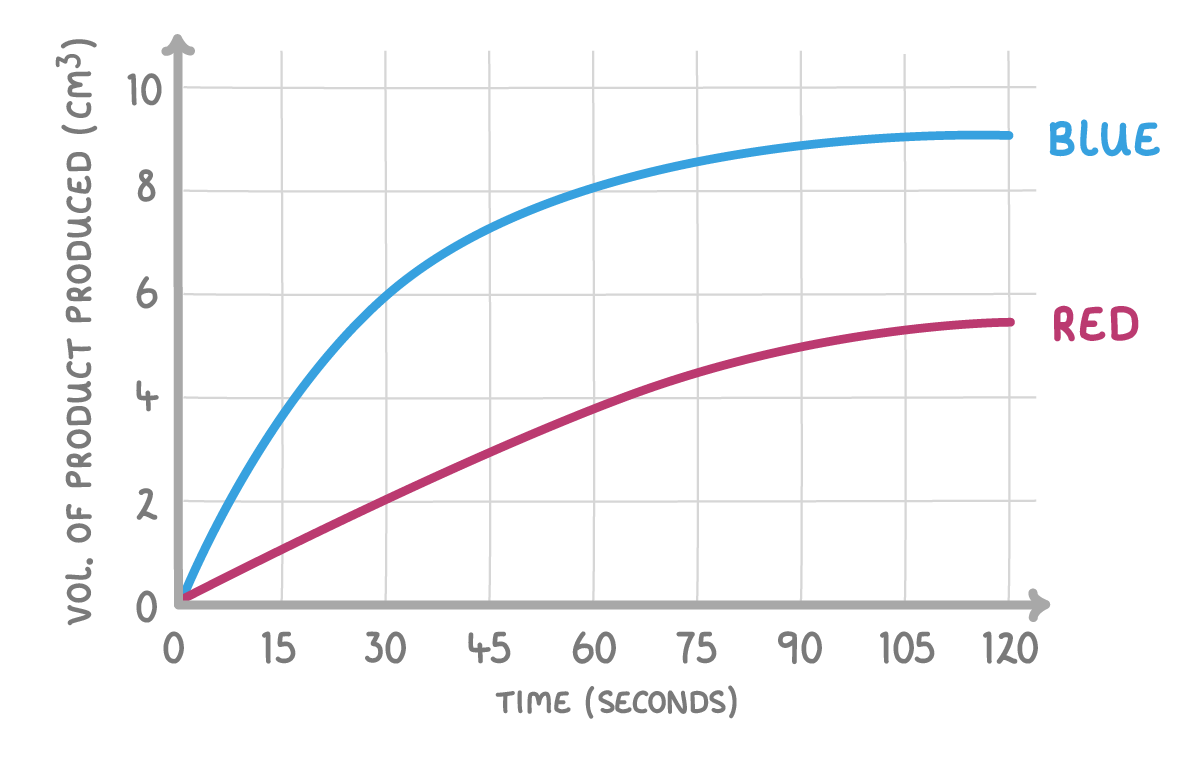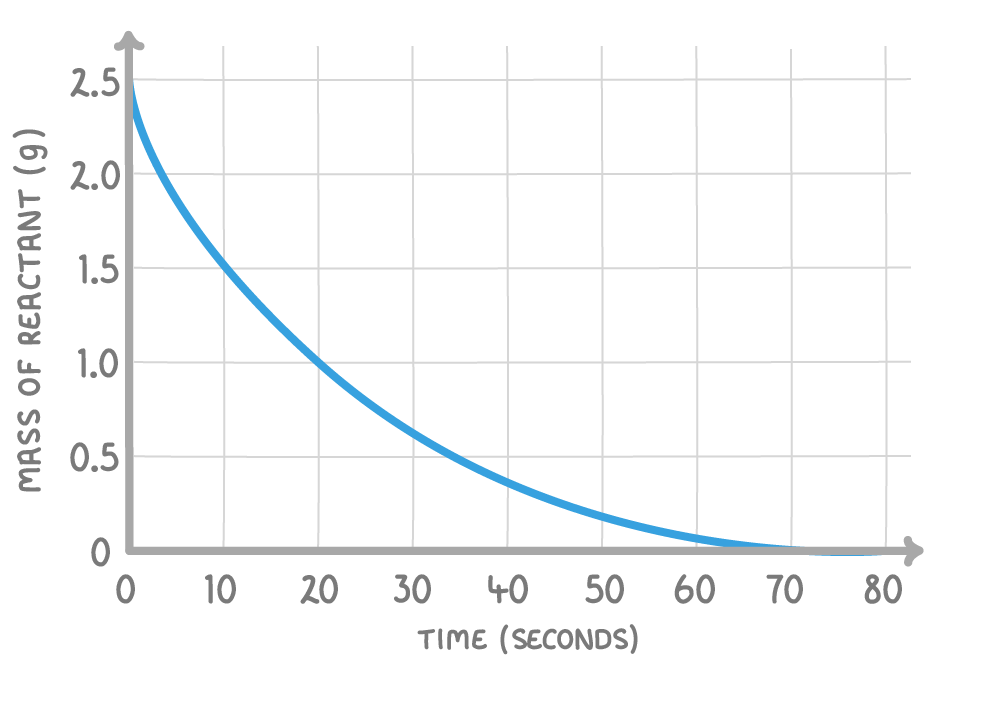Welcome to the Quiz!
This quiz contains 20 questions from a mix of 1 subtopics.
To measure the rate of a reaction, we can either measure how fast the are being used up, or how fast the are being formed.
|
Which of the following are the equations to calculate the overall rate of a reaction?
(Select all that apply).
|
Which of the following could be units for the rate of a reaction?
(Select all that apply).
cm3 s-1
mol s-2
m s-1
g min-1
|
In the following reaction, 90 cm3 of hydrogen gas was produced after 5 mins:
Mg(s) + 2HCl(aq) ➔ MgCl2(aq) + H2(g)
What is the average rate of reaction? Give your answer in cm3 s-1.
cm3 s-1
|
What would the units of the y-axis be?
s
cm3
g
mol
|
The above graph shows how the quantity of a substance changes over the course of a reaction. Is the substance a reactant or a product?
reactant
product
|
The graph above shows how the quantity of hydrogen produced changed over time in the reaction between sodium and hydrochloric acid.
Describe and explain the shape of the graph.
|
Name five factors that affect the rate of chemical reactions.
|
theory states that for particles to react, they have to collide with sufficient energy. The minimum amount of energy required for a reaction to take place is called the energy.
|
When considering how a condition will affect the rate of reaction, you have to consider how it will affect the of effective collisions, and/or the of the particles.
|

Which of the following increase the frequency of effective collisions of the particles in a reaction?
(Select all that apply).
increasing the concentration
decreasing the pressure
using powder instead of small chunks
increasing the temperature
|
3 g of magnesium is added to water.
Which form of magnesium would give the highest rate of reaction?
powder
one large piece
small chunks
|
On the image above, which of the lines represents the activation energy of the reaction?
A
B
C
|
Which of the following increase the rate of a reaction?
(Select all that apply).
decreasing the temperature
using lumps instead of powder
increasing the temperature
increasing the pressure of a gas
|
Which of the following increase the amount of energy the particles in a reaction have?
increasing the temperature
using powder instead of small chunks
using a catalyst
decreasing the concentration of a solution
|
Which of the following is the equation to calculate the gradient?
|
By finding the gradient of the tangent to a curve at a specific time, we can calculate the:
mean rate of reaction
rate of reaction at a specific time
|

In the above graph, which of the following lines indicates a faster reaction?
blue
red
|

Using the above graph, what is the mean rate of reaction in the first 20 seconds?
Give your answer in g s-1.
g s-1
|

Using the above graph, what is the mean rate of reaction in the first 30 seconds?
Give your answer in cm3 s-1.
cm3 s-1
|